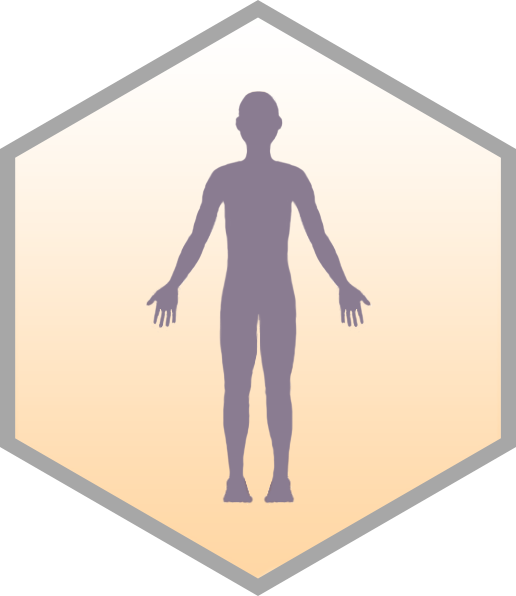ERG1 / YGR175C Overview
- Standard Name
- ERG1 1
- Systematic Name
- YGR175C
- SGD ID
- SGD:S000003407
- Feature Type
- ORF , Verified
- Description
- Squalene epoxidase; catalyzes epoxidation of squalene to 2,3-oxidosqualene; plays essential role in ergosterol-biosynthesis pathway and is specific target of antifungal drug terbinafine; directed to ER via guided entry of tail-anchored proteins (GET) pathway; degradation by ERAD triggered by membrane lipid saturation; human SQLE functionally complements the lethality of the erg1 null mutation 1 2 3 4 5
- Name Description
- ERGosterol biosynthesis 1
- Comparative Info
-





Sequence
The S. cerevisiae Reference Genome sequence is derived from laboratory strain S288C. Download DNA or protein sequence, view genomic context and coordinates. Click "Sequence Details" to view all sequence information for this locus, including that for other strains.
Analyze Sequence
S288C only
BLASTN | BLASTP | Design Primers | Restriction Fragment Map | Restriction Fragment Sizes | Six-Frame Translation
S288C vs. other species
BLASTN vs. fungi | BLASTP at NCBI | BLASTP vs. fungi
S288C vs. other strains
Protein
Basic sequence-derived (length, molecular weight, isoelectric point) and experimentally-determined (median abundance, median absolute deviation) protein information. Click "Protein Details" for further information about the protein such as half-life, abundance, domains, domains shared with other proteins, protein sequence retrieval for various strains, physico-chemical properties, protein modification sites, and external identifiers for the protein.
- Summary
- Erg1p is 496 amino acids long, very short-lived, and highly abundant; contains 4 aromatic-ring hydroxylase (flavoprotein monooxygenase) signature domains; acetylated on K418, phosphorylated on 2 serines, ubiquitinylated on 9 lysines
- Length (a.a.)
- 496
- Mol. Weight (Da)
- 55120.4
- Isoelectric Point
- 6.44
- Median Abundance (molecules/cell)
- 16391 +/- 6414
- Half-life (hr)
- 1.4
Alleles
Curated mutant alleles for the specified gene, listed alphabetically. Click on the allele name to open the allele page. Click "SGD search" to view all alleles in search results.
View all ERG1 alleles in SGD search
Gene Ontology
GO Annotations consist of four mandatory components: a gene product, a term from one of the three Gene Ontology (GO) controlled vocabularies (Molecular Function, Biological Process, and Cellular Component), a reference, and an evidence code. SGD has manually curated and high-throughput GO Annotations, both derived from the literature, as well as computational, or predicted, annotations. Click "Gene Ontology Details" to view all GO information and evidence for this locus as well as biological processes it shares with other genes.
- Summary
- Squalene epoxidase; catalyzes the oxidation of squalene to 2,3-oxidosqualene in the presence of NADPH and oxygen, a step in ergosterol biosynthesis; localizes to both the endoplasmic reticulum and lipid particles
View computational annotations
Molecular Function
- Manually Curated
- enables squalene monooxygenase activity (IDA, IMP)
Biological Process
- Manually Curated
- involved in ergosterol biosynthetic process (IDA, IMP)
Cellular Component
- Manually Curated
- is active in endoplasmic reticulum (IDA, HDA)
- located in lipid droplet (IDA)
Pathways
Phenotype
Phenotype annotations for a gene are curated single mutant phenotypes that require an observable (e.g., "cell shape"), a qualifier (e.g., "abnormal"), a mutant type (e.g., null), strain background, and a reference. In addition, annotations are classified as classical genetics or high-throughput (e.g., large scale survey, systematic mutation set). Whenever possible, allele information and additional details are provided. Click "Phenotype Details" to view all phenotype annotations and evidence for this locus as well as phenotypes it shares with other genes.
- Summary
- Essential gene in reference strain S288C; conditional mutant requires ergosterol for growth at elevated temperature; repression causes abnormal lipid particle morphology and accumulation of elevated levels of squalene; mutants are sensitive to terbinafine; in large-scale studies, repression confers increased competitive fitness and abnormal mitochondrial morphology
Classical Genetics
- repressible
- reduction of function
- conditional
- null
- repressible
- reduction of function
- overexpression
Large-scale Survey
Disease
Disease Annotations consist of three mandatory components: a gene product, a term from the Disease Ontology (DO) controlled vocabulary and an evidence code. SGD provides manually curated DO Annotations derived from the literature. Click "Disease Details" to view all Disease information and evidence for this locus as well as diseases it shares with other genes.
Interaction
Interaction annotations are curated by BioGRID and include physical or genetic interactions observed between at least two genes. An interaction annotation is composed of the interaction type, name of the interactor, assay type (e.g., Two-Hybrid), annotation type (e.g., manual or high-throughput), and a reference, as well as other experimental details. Click "Interaction Details" to view all interaction annotations and evidence for this locus, including an interaction visualization.
- Summary
- Erg1p interacts physically with proteins involved in translation, lipid metabolism, and rRNA processing; ERG1 interacts genetically with genes involved in lipid metabolism
111 total interactions for 100 unique genes
Physical Interactions
- Affinity Capture-MS: 56
- Affinity Capture-RNA: 6
- Affinity Capture-Western: 2
- Co-fractionation: 1
- Co-purification: 1
- PCA: 11
- Proximity Label-MS: 2
- Two-hybrid: 1
Genetic Interactions
- Dosage Growth Defect: 1
- Dosage Rescue: 1
- Negative Genetic: 15
- Phenotypic Enhancement: 1
- Positive Genetic: 8
- Synthetic Growth Defect: 2
- Synthetic Lethality: 3
Regulation
The number of putative Regulators (genes that regulate it) and Targets (genes it regulates) for the given locus, based on experimental evidence. This evidence includes data generated through high-throughput techniques. Click "Regulation Details" to view all regulation annotations, shared GO enrichment among regulation Targets, and a regulator/target diagram for the locus.
- Summary
- ERG1 encodes a squalene epoxidase that catalyzes epoxidation of squalene to 2,3-oxidosqualene (squalene epoxide), which is the first committed precursor in the ergosterol biosynthesis pathway. Ergosterol, the major sterol in fungi and the equivalent of cholesterol in mammalian cells, is an essential component of the plasma membrane, necessary for membrane integrity, fluidity, and proper function of membrane proteins. The entire sterol biosynthetic pathway occurs primarily in the endoplasmic reticulum (ER) and requires almost 30 enzymes. Activities of these enzymes have to be tightly controlled to ensure sufficient supply but also to prevent an excess accumulation of free sterols, which leads to toxicity. This regulation involves multiple mechanisms at transcriptional, translational and post-translational levels. Since sterol biosynthesis requires oxygen, under low-oxygen conditions sterol levels become low, which triggers relocation of two transcription factors, Upc2p and Ecm22p, to the nucleus. The two proteins then recognize and bind sterol regulatory elements (SRE) in the promoters of sterol biosynthesis genes and activate their transcription. Independently, oxygen levels affect transcription of sterol biosynthesis genes through a heme-dependent transcription factor Hap1p and a transcriptional repressor Rox1p. An excess of sterols, on the other hand, stimulates the ER-associated protein degradation (ERAD) pathway to remove the HMG-CoA reductase Hmg1p/Hmg2p, which catalyzes an early rate-limiting step in sterol biosynthesis, thus leading to decreased sterol production. Additionally, Erg1p is also targeted for degradation by another ERAD component, Doa10p, which is controlled by intracellular levels of lanosterol, an ergosterol precursor downstream from Erg1p. Despite some similarities, there are significant differences in sterol biosynthesis and its regulation between fungal and mammalian cells, which has made ergosterol biosynthesis an attractive target for antifungal drugs. Widely used azole drugs target lanosterol 14-alpha demethylase (Erg11p), whereas Erg1p is a target for terbinafine. Mutations in these genes are a major cause of antifungal drug resistance.
- Regulators
- 20
- Targets
- 0
Expression
Expression data are derived from records contained in the Gene Expression Omnibus (GEO), and are first log2 transformed and normalized. Referenced datasets may contain one or more condition(s), and as a result there may be a greater number of conditions than datasets represented in a single clickable histogram bar. The histogram division at 0.0 separates the down-regulated (green) conditions and datasets from those that are up-regulated (red). Click "Expression Details" to view all expression annotations and details for this locus, including a visualization of genes that share a similar expression pattern.
Summary Paragraph
A summary of the locus, written by SGD Biocurators following a thorough review of the literature. Links to gene names and curated GO terms are included within the Summary Paragraphs.
Last Updated: 2000-08-29
Literature
All manually curated literature for the specified gene, organized into topics according to their relevance to the gene (Primary Literature, Additional Literature, or Review). Click "Literature Details" to view all literature information for this locus, including shared literature between genes.